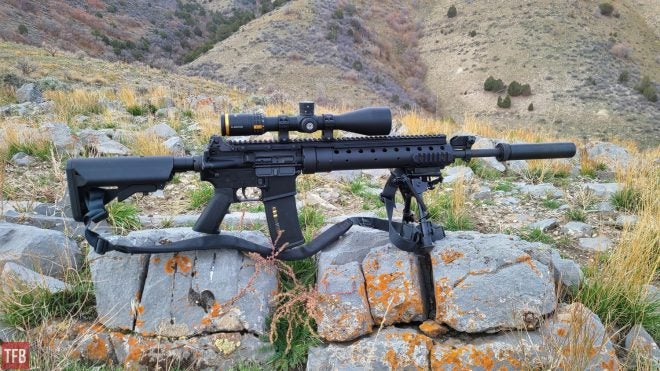Many shooters know of Horus from their family of reticles which are licensed out to various scope manufacturers, including big names like Leupold, Nightforce, and Vortex. Recently, Horus entered the scope market with their HoVR 5-20×50 riflescope. Horus graciously sent out a loaner scope for my test and review.
More Long Range Optics on TFB:
- TFB Review: Leupold Mark5 HD 5-25×56 PR2 Reticle
- NATO Stock Number for the Leupold Mark 5HD 3.6-18×44 M110 Riflescope
- TFB Review: Nightforce ATACR 5-25×56 SFP + SPUHR Mount
- TFB Review: Vortex Diamondback Tactical 6-24x50mm Riflescope
- USSOCOM Select Nightforce for Ranging – Variable Power Scope
The HoVR Scope
The turrets on the HoVR are fairly standard. The top turret handles elevation, and the right side (shooter’s perspective) adjusts windage. The elevation turret is exposed and the windage turret is capped. Both can be rezeroed and the elevation turret has a zero stop so it can easily be returned to zero after a correction is dialed in. The zero stop feature on the HoVR is much easier to set than other scopes on the market. Simply put, you loosen the small screws that hold the cap on the turret, pull up (or push down), then re-tighten the small screws.
On my Mk12 Mod 0 kinda-clone, the scope had 5.3 MRAD of available elevation adjustment. A 20 MOA base would have added about 5.5 more MRAD of available elevation. That is a decent amount of adjustment but is not amazing. However, the 30mm tube of the HoVR can only allow so much travel. A larger 34mm or 35mm tube would provide more travel but at the cost of added weight and scope rings or mounts that are more expensive. Between those options, I would take the 30mm tube and less adjustment because the TREMOR 3 is not a reticle which requires much dialing.
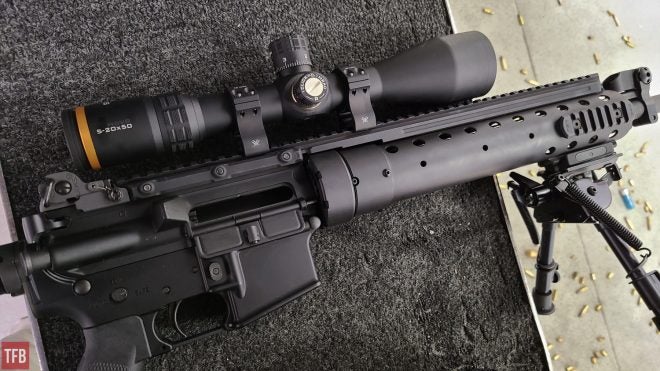
Zeroing the HoVR was uneventful, which is always a good thing. The scope rings are High-height Vortex Pro Series 30mm.
I do not have access to a scientific laboratory to test tracking accuracy, but this scope appeared to track correctly. Dialed corrections were reflected on the target. The HoVR consistently returned to zero when the turrets were returned to zero. The clicks themselves are just about right. The elevation turret never moved unintentionally while carrying or while in a case. The clicks were audible and tactile, but I would not complain if they were a just bit more firm.
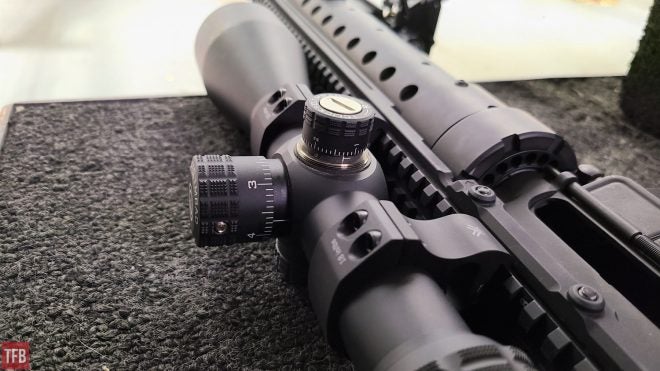
Two different methods are used to reset the zero. The elevation turret uses small set screws, while the windage uses a single large screw.
The design choice to have a capped windage turret and exposed elevation turret was absolutely the correct decision for this optic. The TREMOR 3 reticle is designed for use without dialing in windage. Capping the windage turret makes it very hard to unintentionally dial in windage. If a shooter wants to dial for wind, the turret beneath the cap can still be used.
The magnification ring is, in my opinion, the perfect tension. It was easy to move, but would only move if you wanted to move it. The magnification ring also has a small raised nub that works like a throw lever without being obtrusive like a throw lever.
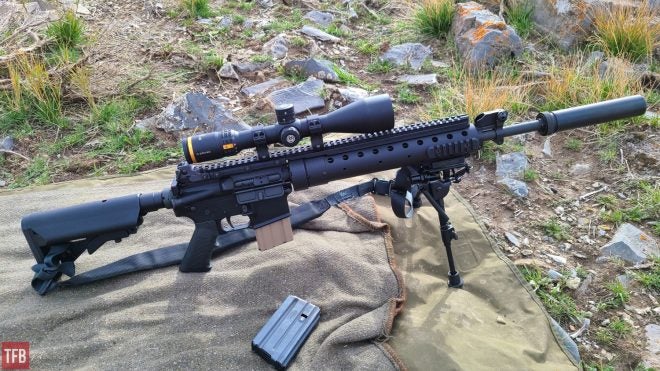
The magnification ring features a raised orange nub to facilitate turning, seen here just in front of the logo on the scope eyepiece.
A parallax adjustment is included on the left side of the scope. It is marked in yards instead of the more vague + or – marks used on some scopes. Ocular adjustments are made at the eyepiece in the standard method. The ocular tension was good and solid so the adjustment was not lost through handling and use. The scope is not illuminated so there is no illumination control.
I did not conduct a durability or abuse test, but the scope was not babied at all. When it was in a case it was a soft case, and I threw it in the back seat like I do all my other guns. Bouncing around on the back seat over rough roads and trails did not affect the zero.
The glass quality of the HoVR is very good. The lighting conditions of my second range outing were less than ideal. We were shooting just over 1,000 yards east into the morning sun, with haze in the air, with targets in shadow. Another scope with a similar MSRP and feature list from a well-known manufacturer struggled in those conditions. The HoVR provided a noticeably better target image. I believe the Japanese glass in the HoVR made the difference over the Philippines-made glass in the competitor.
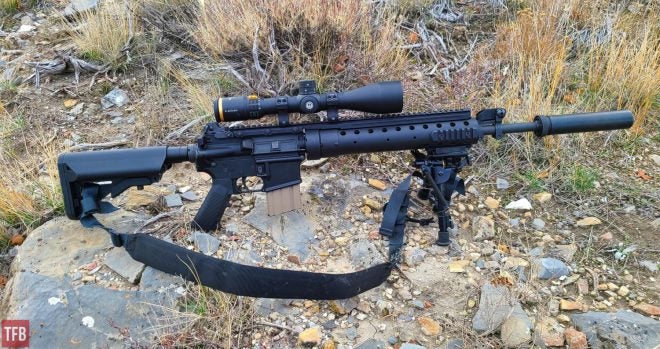
Standard scope rings can be used on a Mk12 Mod 0 rather than a cantilever mount, thanks to the PRI SPR rail that attaches to the upper and handguard.
The TREMOR 3 Reticle
The TREMOR 3 reticle is the most noteworthy feature of this scope. Many shooters love or hate “busy” reticles. I love them. The majority of my shooting is done on public land at distance, and I like reticles with features that make it easier to hit my targets. I have used many other reticles, ranging from antique crosshairs to modern MRAD scopes with tree-style reticles for holding windage. The TREMOR 3 is the best I’ve ever used.

TREMOR 3 reticle, via horusvision.com
It is hard to adequately cover the TREMOR 3 and the scope in one article, so I will be writing a follow-on article focused on the reticle. The short version of why the TREMOR 3 is so good is that, instead of converting the observed wind into MRAD and holding that correction, the TREMOR 3 has wind dots that correspond to a certain MPH of wind. Instead of observing the wind, and consulting a drop chart to see how many MRAD of correction should be applied based on range and wind speed, you simply look at the wind speed. Each wind dot corresponds to a certain MPH of wind.
This system takes a little more work on the front end to figure out, as the exact MPH of wind per dot can change with the ballistics of a gun. On my gun, with my ammunition, and at my elevation, each dot was 3 MPH of wind. A 300 Win Mag with high-BC bullets would probably be 4 MPH per dot instead of the 3 MPH per dot that was calculated for my 5.56 with an 18” barrel and decent but not amazing ammunition. But once you know the value of the wind dots on a given gun in a given set of environmentals, they do not change.
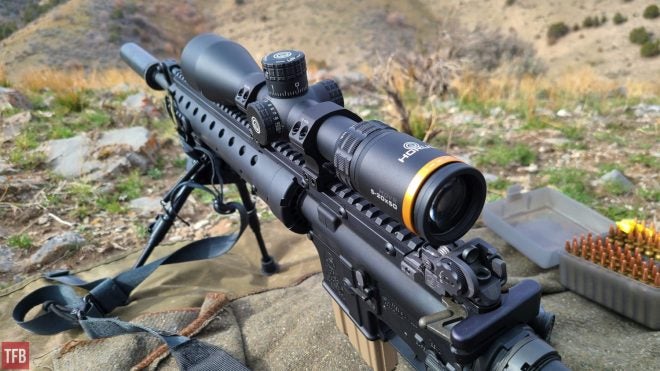
The zero stop on the elevation turret was easy to use, and the parallax adjustment is marked in yards.
The HoVR is a first focal plane optic, meaning that the reticle increases in size as magnification increases. Because it scales in size along with the target image, the reticle marks can always be used to hold a correction. The trade off to first focal plane reticles is that they tend to be difficult to use at low power. On 5x, the bottom-end on the HoVR, the reticle is very faint and the markings cannot be read. If you really had to take a shot at 5x you could, but it would not be ideal. However, this kind of scope does not exist for close range, low magnification work. I only used low magnification for the wide field of view it allows, then zoomed in to take shots. At about 7 power the reticle markings became visible. The ability to change zoom between low power and high power and have a reticle that is properly scaled is absolutely worth the small price of a faint reticle at the very bottom end of the zoom range.
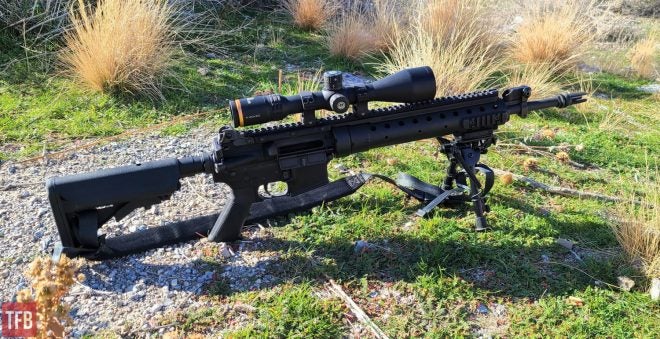
The HoVR is an excellent scope in open country.
Conclusion
The HoVR is the most economical way to get a TREMOR reticle on your gun. The HoVR is also available with the H59-MOA and TREMOR 5 reticles. Shooters who prefer MOA to MRAD, or who do not want wind dots but still want a full grid reticle, may prefer the H59-MOA. The TREMOR 5 is the official reticle of the Precision Rifle series, and is a slightly-simplified TREMOR 3.
I would love to see a slightly lower-power and smaller version of this scope, something like a 4-16×42 or 3-12×40, added to the Horus lineup. A capped windage turret could even be considered to keep the scope smaller and have fewer protrusions to get in the way of an offset red dot. Adding an option for an illuminated reticle would also be desirable for hunters or others who shoot in low light.
I will be sad to send this scope back to Horus, but after using a TREMOR 3 in the field and seeing it work, I will be buying a scope with a TREMOR 3 reticle. I understand why SOCOM selected this reticle for their new scope.
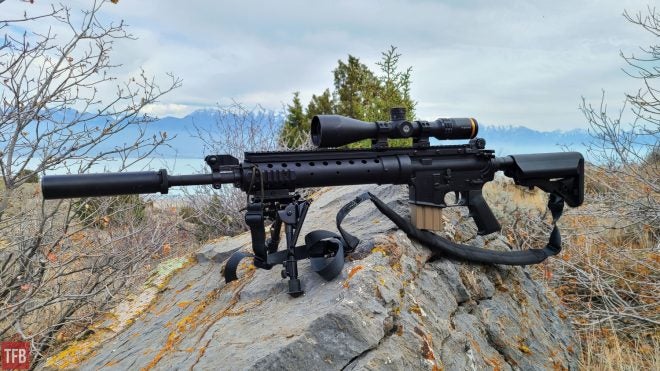
 Your Privacy Choices
Your Privacy Choices
